- Home
- Peter Ackroyd
J. M. W. Turner Page 2
J. M. W. Turner Read online
Page 2
Turner is said to have made this self-portrait while staying with John Narraway in Bristol in 1791. He was 16. The host resented the young guest’s brusque manners, and hung the portrait on the stairs for “he would not have the little rip in the drawing room.”
The niece also reported that he would “sometimes go out sketching before breakfast, and sometimes before and after dinner.” He was at work all the time, in other words, and he was nicknamed by his hosts the “prince of rocks” because of his constant clambering over the cliffs that overlooked the Avon. The sketchbook he took with him was filled with drawings of that riverscape. He was beginning to find his way as a topographical artist, and in the purlieus of the Avon he came upon evidence of the picturesque (to use the fashionable late eighteenth-century term) and intimations of the sublime. The water-colours he fashioned out of that experience were soon hanging on the walls of the Royal Academy.
When he returned to that school he soon graduated from Plaster Class to Life Class. He was permitted to draw only nude male models, who were set in graceful or demonstrative attitudes derived from the examples of the Old Masters. He remained in the Life Class from 1792 to 1799, a long apprenticeship in fashioning the human form. The results are perhaps seen to best advantage in the few so-called “pornographic” sketches that were rescued from the misguided zealotry of his executors. He specialised in erotic female nudes, and even at the end of his life he was sketching female genitalia; most of them were burned after his death as a shocking example to the art lovers of the nation. Yet his more significant interests surely lay elsewhere. His drawings for the exhibitions of 1792 and immediately subsequent years are of ruined towers and monastery gates, of chapels and churches and abbeys. In 1793 he was awarded the “Greater Silver Pallet” for landscape drawing, a silver medal donated by the Society for the Encouragement of Arts, Manufactures and Commerce. It was a sure sign that his immense abilities in that field were being noticed. It proved to be, in fact, the only prize he ever received.
Out of term-time he roamed abroad, looking for landscapes and monuments. He already had clients who would purchase his work, and periodicals that would publish it. One drawing was engraved, for example, in The Copper-Plate Magazine; it was a signal achievement for so young an artist, and alerted him quickly to the commercial possibilities of his gift. Over the next few years his work would appear in many illustrated magazines, introducing his name to the public. In 1792 he travelled to Wales and, in the following summer, he was ranging from Hereford to Worcester and Evesham. He also found the time and opportunity to visit Sussex and Kent, where the ancient towns of Rochester, Dover and Canterbury were available for artistic inspection. He regularly walked twenty-five miles a day, sketching quickly as he went; he carried all his effects bound up in a handkerchief at the end of a stick and, in this easy manner, he observed everything that passed above and around him.
In 1794 he was touring the Midland counties; he kept a list of interesting places, appending remarks such as “fine” and “romantic,” as well as careful notation of the distances between them. He had with him two sketchbooks bound in calf, with brass clasps, that looked suitably professional. In the following year he returned to Wales, and then travelled southward to the Isle of Wight. His sketchbooks now had a title, “Order’d Drawings.” He was working to the demands of his clients, whether private or professional. On the Isle of Wight, however, he was also indulging his private passion. He sketched the sea and the coastline, with the waves beating against the shore; he drew rocks and boats. The marine world enthralled him.
He returned to his parents’ house in Maiden Lane where he used a “painting-room” above his father’s shop, but very soon after these drawing-tours he rented accommodation and work-space around the corner in Hand Court; his work was now becoming so extensive that he may well have needed the additional space but his mother’s uncertain temper may also have contributed to his decision.
He went back to the Life Class of the Royal Academy, but in 1796 he embarked upon a new field of endeavour. In the exhibition of that year he placed his first oil-colour. It was entitled Fishermen at Sea and was a direct result of his sojourn on the Isle of Wight. He had already earned a reputation as a water-colourist but he seemed determined to emphasise his proficiency in all aspects of artistic achievement. He wished to express in oil what he had learned in water-colour. It is a highly atmospheric piece lit by the moon and by moonlight reflected in the water; Turner catches the desolation of the night as the boat is lifted upward on the swell of the sea. The two reviews he received were favourable, and the painting sold for ten pounds.
He needed other sources of income, too, and during this period he was employed by Doctor Thomas Monro to copy certain water-colours in Monro’s collection at Adelphi Terrace. A fellow artist of the same age, Thomas Girtin, drew the outlines while Turner was employed to wash in the light and shade with characteristic tints of blue and grey. Monro is believed to have thereby given both young artists a good education at his own expense, and Ruskin even called him Turner’s “true master.” One Academician noted that “Dr. Monro’s house is like an Academy in the evening.” Turner was paid three shillings and sixpence for the evening’s work, together with a free supper of oysters. But the work, which some have described as “hack-work,” was of material benefit to him. He acquired his mastery by intelligent copying of great originals. There is no better form of education. He is said to have learned in the process how to wipe out redundant colour with pieces of bread, a useful technique for any artist. When Turner was quizzed about this early employment he replied, acerbically, “Well, and what could be better practice?” But the strain of work, by day and by night, seems materially to have affected his health. In the late autumn of 1796 he travelled to Brighton, where he might recuperate by the sea, and here he executed a few sketches.
In the following year he exhibited two oil-paintings at the Royal Academy; one of moonlight over the Thames and one of sunset over the sea and shore. The two burning orbs are seen in precise correspondence, lending ethereal warmth and numinous authority to the scenes. They were enough for the critic of the Morning Post to announce that the young artist possessed “genius and judgement.” With great foresight he went on to say that “he seems to view nature and her operations with a peculiar vision.” Another perspicacious visitor to the exhibition wrote in his diary that “I am entirely unacquainted with the artist; but if he proceeds as he has begun, he cannot fail to become the first in his department.” One of his water-colours in the same exhibition was declared by the St. James’s Chronicle to be “equal to the best pictures of Rembrandt.” At the age of twenty-two Turner had become one of the foremost artists of his day.
He still did not feel himself to be financially secure—it is in fact arguable whether he ever did—and in this period he took in pupils. He gave lessons in drawing for five shillings an hour, but his classes were conducted in an informal manner. He told one contemporary that his practice was “to make a drawing in the presence of his pupil and leave it for him to imitate.” He eventually tired of teaching, however; or, more likely, he no longer required the additional income. One of his pupils recalled Turner as “eccentric, but kind and amusing.” The testimony of those who observed him at close hand tends to reinforce the impression of a friendly and cheerful man; it may temper the later legend of him as a crusty old curmudgeon.
In the year when he was being hailed as a young prodigy, he made his first visit to the north of England. He had been commissioned by The Copper-Plate Magazine to complete some drawings of Sheffield and Wakefield, but he took this opportunity to explore the wilder landscape of the north. He wanted to see the Lakes, also, and catch a glimpse of the glorious within his native shores. It is not entirely coincidental that, in the following year, Wordsworth and Coleridge would publish their combined venture, Lyrical Ballads, commonly seen as a harbinger of the movement known as Romanticism, which evinced the same preoccupation with sublime landscape. Turner
shared the same sea-change in taste and sensibility that launched the poetic achievements of the English Romantics, and so it is significant that he should have sketched and painted the landscapes where they also found their inspiration. As a result of this tour, also, he consolidated and extended both his range and reputation as an artist.
It was the longest painting expedition he had yet undertaken. He took with him two large leather-bound sketchbooks, and began work just a few miles from Derby. He went eastwards to Yorkshire, Durham and Northumberland, and then went on to the Lake District where he remained two weeks. He spent hours within churches, lovingly delineating the naves and the crypts. He hired boats to capture his subjects from a particular vantage. He was deeply studious and determined. In Yorkshire and Durham he visited most of the monuments of antiquity, the chapels and the abbeys, where his love of old stone is powerfully conveyed in images of church interiors and of church ruins. It is intriguing that much later in life he returned to the same site of these early endeavours, such as Kirkstall Abbey or Norham Castle. For the latter he had an especial fondness. One fellow coach traveller was surprised when Turner stood up and bowed as their vehicle passed the ruins of the castle; the by now old and venerable painter told him that, after he had completed a painting of Norham in his younger days, he had never wanted for work again. On these later trips he often painted the scene as it had been in his youth, ignoring any contemporary changes. His memory was still alive and powerful, investing the landscape and the buildings with a reality that lived beyond time. His final painting of Norham Castle, executed in the last years of his life, is irradiated by light and colour. The castle itself, which he had once drawn so delicately and distinctively, has become a luminous body. It has been transformed by the power of Turner’s imagination.
In the Lake District he encountered the wildness of the crags and mountains. It was a great and inexhaustible subject. He was also entranced by all the effects of the mist and the water cloaking the landscape like some spiritual veil; he painted rain and rainbows, morning and evening light.
When he returned to London he had material for nine works that he exhibited the following year at the Royal Academy, as well as a number of private commissions. On viewing Turner’s water-colour of Norham Castle, the critic of the Whitehall Evening Post deemed it “a work upon which we could rivet our eyes for hours and not experience satiety.” Before the exhibition itself another Academician went to the gallery and “found Turner there touching in his pictures—seemed modest and sensible.” In the same period another artist, John Hoppner, visited Turner in his studio in Hand Court and declared him to be a “timid man afraid to venture.” He must have caught Turner in a most unusual mood. The significant fact is that from this time forward Turner became the subject of much comment. He had become worth knowing. He was, in fact, something of a celebrity.
That is why he had been commissioned by the Clarendon Press to complete some water-colours of Oxford, which could then be engraved for the university almanac. He had ambitions in another direction also. He wished to be elected as an Associate of the Royal Academy, even though he was below the stipulated age. He had many conversations with an éminence grise of the Academy, Joseph Farington, who assured him that he was “certain” he would succeed. Farington also left recollections of what Turner said on this occasion. The aspiring young painter was not sure if he should still reside in the vicinity of Maiden Lane—“He thought he might derive advantages from placing himself in a more respectable situation. He said, he had more commissions at present than he could execute and got more money than he expended.” By “more respectable” he meant of a higher social class; now that he was making money, the surroundings of his early life were no longer suitable. Farington also visited Turner’s studio and noted that “the apartments to be sure, small and ill calculated for a painter.” So he had some reason to wish to leave.
In this year he made two visits to friends who have left a small store of reminiscences. In the spring of 1798 he visited the Reverend Robert Nixon of Foots Cray in Kent; Nixon had frequented the barber’s shop in Maiden Lane, and had assisted the young Turner in the first steps of his career. Despite the professed beliefs of his host, Turner paid no great attention to matters of religion. Another guest at the parsonage recalled that “he worshipped nature with all her beauties, but forgot God his Creator.” When the family party attended church on Sunday, a ritual that might seem obligatory in the household of the local parson, Turner remained “shut up in the little study . . . diligently painting in water-colours.” His assiduity is only to be expected, but it is also clear that he had no interest at all in orthodox pieties. He loved ruined abbeys and churches, but he dismissed religion itself as of no importance. He was in effect something of a pagan.
The Nixon party embarked upon a sketching-trip through the scenery of Kent. They dined at an inn one afternoon, and the Reverend Nixon called for wine. “No,” Turner said, “I can’t stand that.” So no wine was provided. The reporter of this incident explained that he had demurred because of his “love of money.” But, on this occasion at least, the charge of miserliness seems unfair. He may have wanted to stay alert—sketching, after all, was his life’s work—and did not wish to mingle business with pleasure. The incident does, however, emphasise his single-mindedness. His “love of money” did not preclude him from making a loan to a friend. In one of his sketchbooks is the notation, “Lent Mr. Nixon £2.12.6.”
He also paid a return visit to the Narraways, in Bristol, where it was remarked that “he seemed an uneducated youth, desirous of nothing but improvement in his art. He was very difficult to understand, he would talk so little . . .” But this is characteristic. Artists are not, on the whole, intellectuals; they do not try to be particularly articulate and, when they do speak of their art, they do not do so in the terms of the critic or connoisseur. But that is not their job. They simply do it. It was also noted that in the evening he would “sit quietly, apparently thinking, not occupied in drawing or reading.” No doubt he was thinking of the next day’s painting.
On this visit he journeyed to Chepstow and Tintern, among other places, as well as to Aberystwyth and Denbigh. Some of his drawings and water-colours from this period are spattered with raindrops.
In London, at the beginning of November, he received the unwelcome news that he had against all expectation failed to be elected an Associate; but he did not have to wait long for that elevation and, in the meantime, he found comfort and consolation elsewhere. In the late 1790s he had become acquainted with the Danby family. John Danby was a composer of songs and Catholic masses who had for some years lived around the corner from the Turners in Covent Garden; he had also performed as an organist at the Pantheon, where Turner had worked as a scene-painter. In the small world of London such a connection can lead to a lifelong friendship. But life is not always so very long. John Danby died in the spring of 1798, leaving a young widow and four daughters.
At the time she was widowed, Sarah Danby was living in London, in Upper John Street. When we next hear of her, she is residing at a nearby address in Norton Street. She is in fact living with Turner. He must have approached Sarah Danby shortly after the death of her husband, and it is clear enough that his advances were reciprocated.
It will be seen, over the course of his life, that the artist had a particular fondness for widows. It may have just been coincidence but it does suggest some attraction to older or at least more mature women. He never married but preferred to cohabit in a looser fashion. This fear of commitment, if such it was, was no doubt connected with his intense privacy (and on occasions secrecy) as well as the individual nature of his visionary achievement. But it may also be related to the horror of his parents’ marriage that he had seen at very close quarters. He always showed great affection for his father, and must have understood the misfortune of being tied to a woman who was straying further from the bounds of sanity. Turner’s mother was subject to periodic fits of extreme rage, and the expe
rience of the misery of madness within the family may have deterred him from any kind of formal matrimonial union.
It is not coincidence that Turner seemed always to need the protection of some surrogate family. Clara Wheeler, the daughter of one of Turner’s friends, recalled how he would visit the house of her family as “a haven of rest from many domestic trials too sacred to touch upon.” The young painter “usually spent three or four evenings in every week at our fireside.” In his relationship with Sarah Danby and her children he may have been seeking an alternative family. Certainly, in later years, the Royal Academy assumed the comforting role of home.
In the year after the beginning of his relationship with Sarah Danby, Turner’s mother was confined to a madhouse in Old Street. She would never be allowed into the world again. In the following year she was removed to Bethlehem Hospital, popularly known as “Bethlem,” where she died two years later amid the shrieks of the insane in the Incurable Ward.
It was a subject about which he chose never to talk. When someone mentioned his mother to him at a later date, his “manner was full of majesty, accompanied by a diabolical look.” The reasons for that taciturnity are clear enough. It was always a subject too sensitive to discuss but, perhaps more significantly, he may have had some lurking fear of inherited madness. There would come a time, in fact, when Turner would himself be condemned as “mad” by the more vociferous critics.
CHAPTER TWO
1799–1802
In the new year, 1799, he was still very busily employed. He informed Farington, the Academician and indefatigable diarist, that “he had 60 drawings now bespoke by different persons”; he was indeed now considered the best artist for topographical illustration, and was as a result much in demand. One collector offered him forty guineas for a water-colour of Caernarvon Castle. The celebrated dilettante, Sir William Beckford, asked him to paint his remarkable retreat, Fonthill Abbey in Wiltshire; Turner subsequently spent three weeks there.

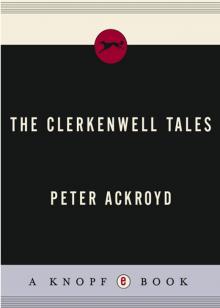 The Clerkenwell Tales
The Clerkenwell Tales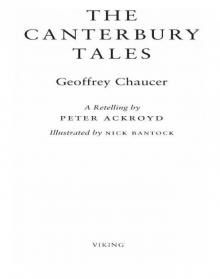 The Canterbury Tales
The Canterbury Tales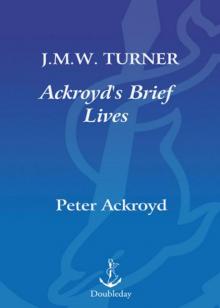 J. M. W. Turner
J. M. W. Turner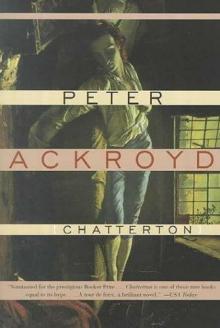 Chatterton
Chatterton The Canterbury Tales – A Retelling
The Canterbury Tales – A Retelling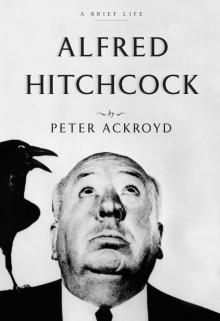 Alfred Hitchcock
Alfred Hitchcock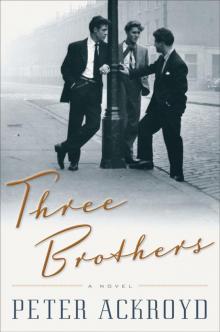 Three Brothers
Three Brothers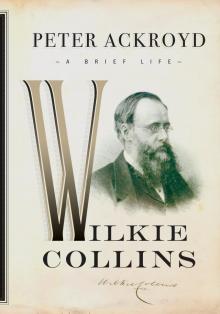 Wilkie Collins
Wilkie Collins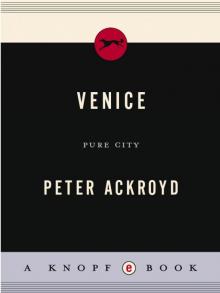 Venice
Venice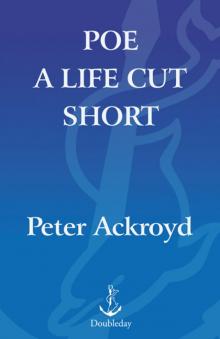 Poe
Poe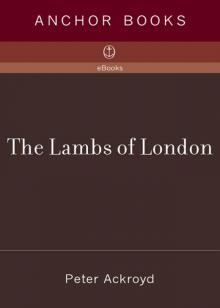 The Lambs of London
The Lambs of London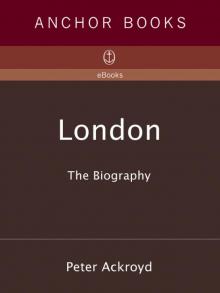 London
London Queer City
Queer City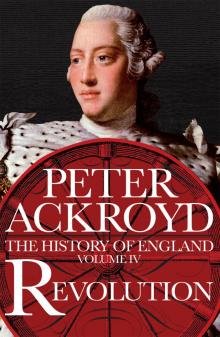 Revolution, a History of England, Volume 4
Revolution, a History of England, Volume 4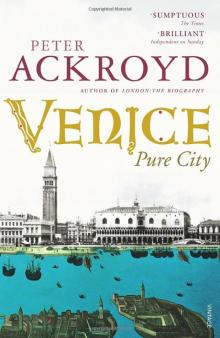 Venice: Pure City
Venice: Pure City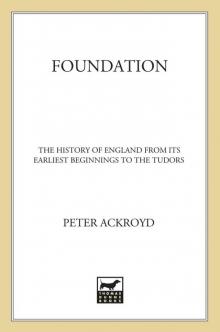 Foundation
Foundation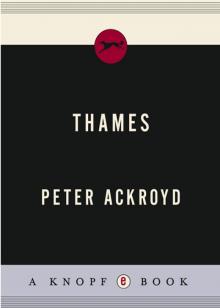 Thames
Thames The Plato Papers
The Plato Papers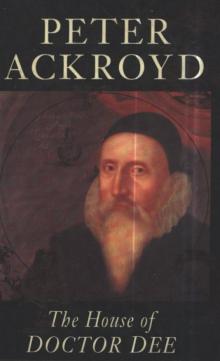 The house of Doctor Dee
The house of Doctor Dee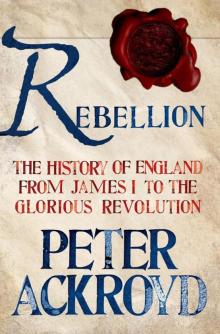 Rebellion: The History of England from James I to the Glorious Revolution
Rebellion: The History of England from James I to the Glorious Revolution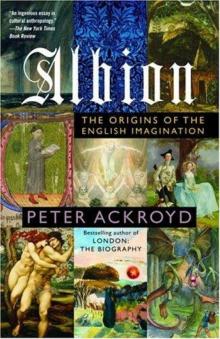 Albion: The Origins of the English Imagination
Albion: The Origins of the English Imagination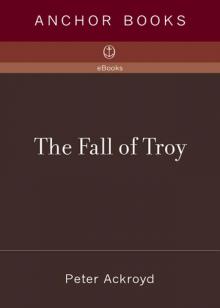 The Fall of Troy
The Fall of Troy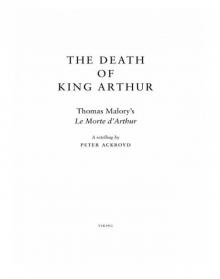 The Death of King Arthur
The Death of King Arthur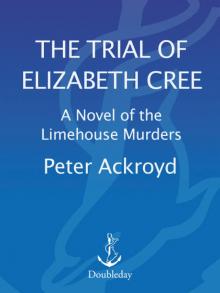 The Trial of Elizabeth Cree
The Trial of Elizabeth Cree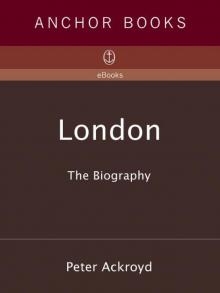 London: The Biography
London: The Biography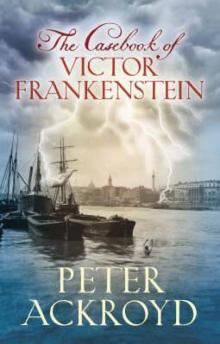 The Casebook of Victor Frankenstein
The Casebook of Victor Frankenstein Hawksmoor
Hawksmoor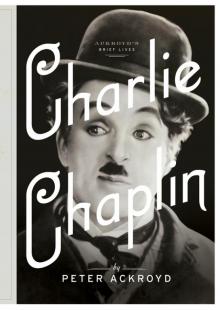 Charlie Chaplin
Charlie Chaplin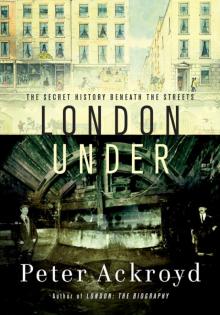 London Under
London Under